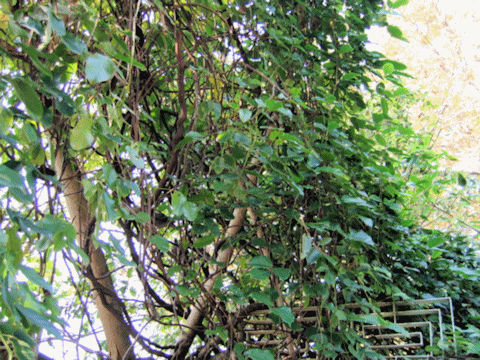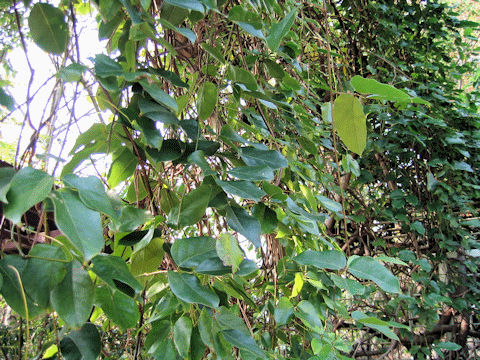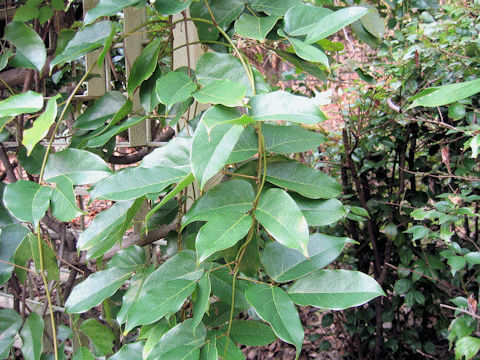
|
"Tobi-kazura" (Mucuna sempervirens) belongs to Fabaceae (the Pea family). It is an evergreen woody vine that is distributed from Bhutan to central and southern China and Kyushu in Japan. Until now, it has been said that there is only one near Sagara Kannonji Temple in Kikuka Town, Kumamoto Prefecture, but in recent years it has also been found on Tokoi Island in Sasebo City, Nagasaki Prefecture. The vines are dark brown and the leaves are trifoliate. The leaflets are ovate to elliptic or oblong with sharp tips. From April to May, dark purple flowers bloom on the drooping racemes. It is also known as "Aira-tobi-kazura" in Japan. In Buddhism, it is called "Udonge", and it is said that "it blooms once every three thousand years, and at that time, King Kinrin appears."
|




